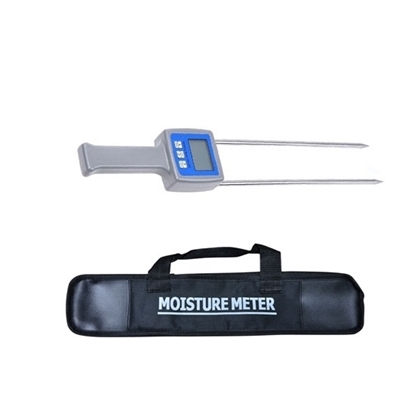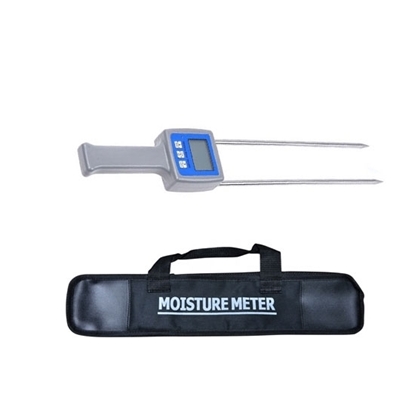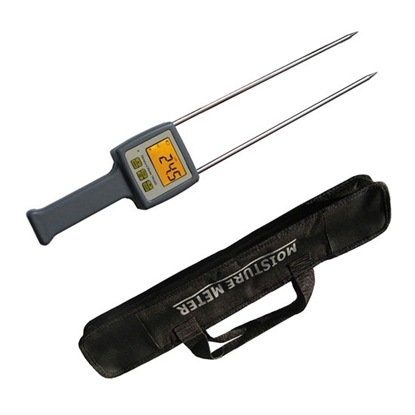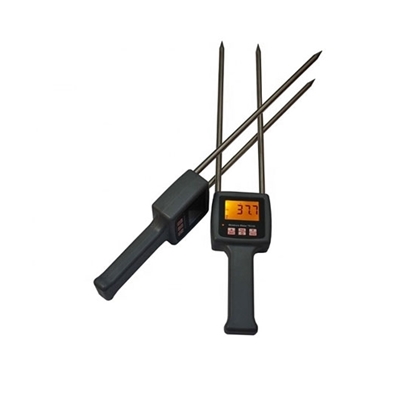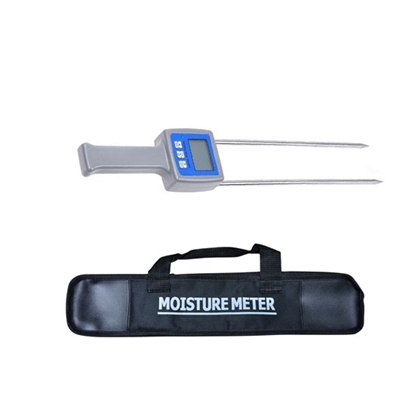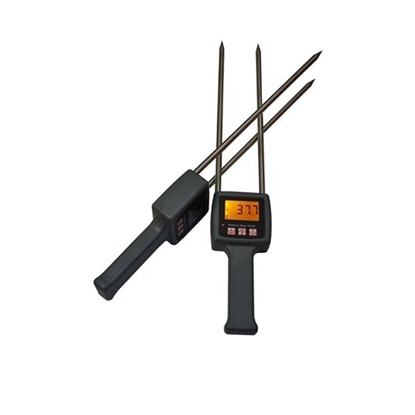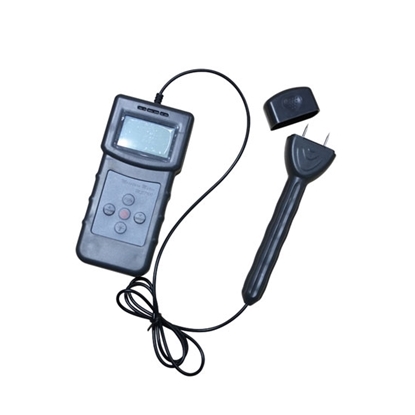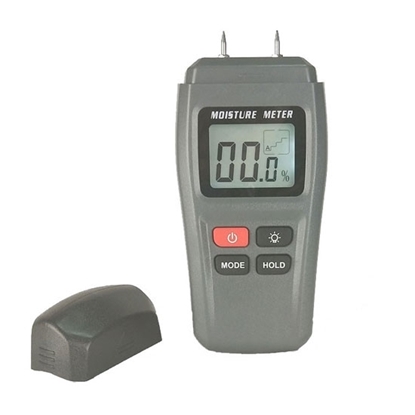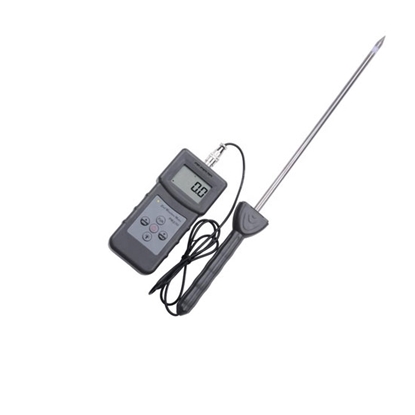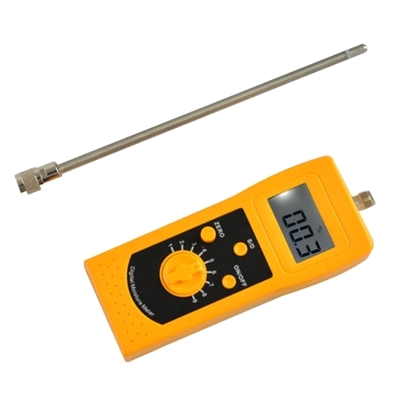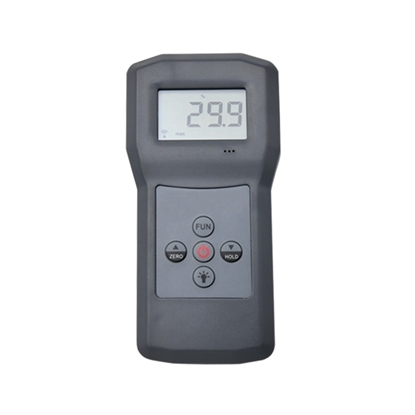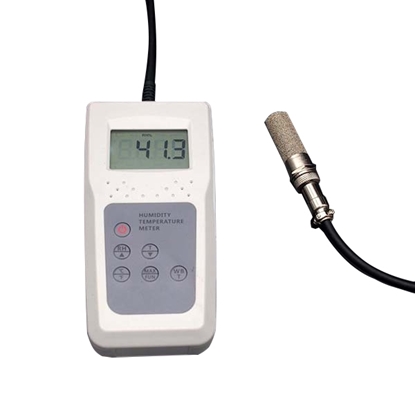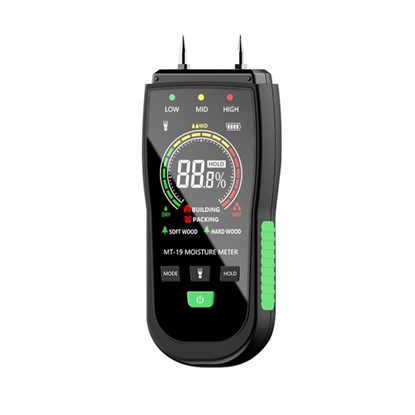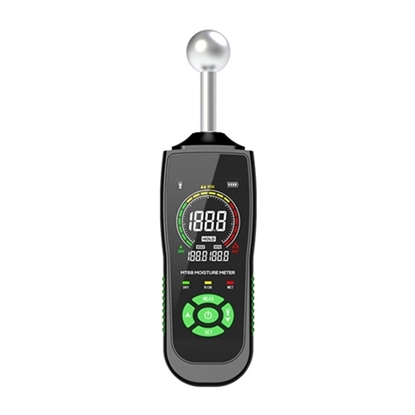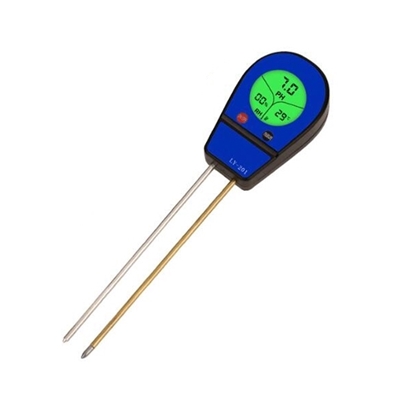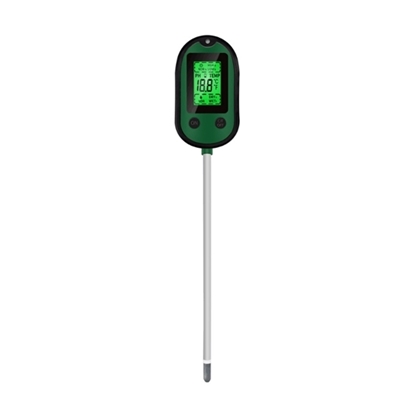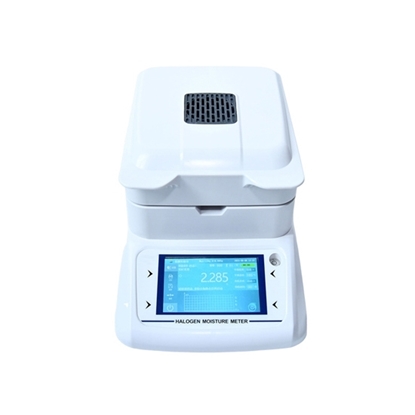Moisture Meter
Digital Grain Flour Moisture Tester, 11 Kinds of Powder Grain
Digital Grain Moisture Tester for Wheat, 6 Kinds of Grain
Digital Grain Moisture Tester, 25 Kinds of Grains
Digital Multifunctional Moisture Meter for Wood, Grain
Digital Wood Sawdust Moisture Meter, Pin Type, LCD Display
Portable Digital Hay Moisture Tester
Digital Moisture Meter for Wood, LCD Display
Handheld LCD Wood Moisture Meter
Portable Digital Soil Moisture Meter
Food Moisture Meter
Handheld Concrete Moisture Meter
Temperature and Humidity Meter
Digital Wood Moisture Detector, Pin Type
Inductive Moisture Meter for Walls/Wood Flooring
Soil pH and Moisture Meter with Temperature
4 in 1 Digital Soil Moisture Meter for Plant
Halogen Moisture Analyzer
LCD display portable moisture tester uses the conductivity of the object to measure the moisture content. The higher the moisture content is, the higher the corresponding conductivity will be. The moisture content will be measured by measuring the conductivity of the measured object. The ATO moisture detector are applied in the grain, seed, bamboo products, textile and other industries. It can detects up to 25 grains, such as wheat, corn and barley, as well as wood, hay straw and wood chips.
Handheld Pin type moisture meter has the characteristics of portability, simple use, quick and accurate measurement.
The Woking Principle of Moisture Tester
The portable moisture detector is composed of capacitance sensor, C/V conversion circuit, A/D converter and LCD digital display circuit. After the capacitance sensor is scooped into the tested grain, the medium is A variety of different grain tested. Since the dielectric constant of water is much larger than that of general substances, a small change in the measured grain water content will cause a large change in the capacitance of the sensor. Through C/V conversion circuit and A/D converter, the LCD digital circuit directly shows the percentage of the measured grain water content.
Hay Moisture Tester Applications
Hay moisture tester is widely used in all biomass energy power plants and straw press units that need rapid water determination. Biological industry laboratory and production process. In addition, it can also be used in the laboratories and production processes of farms, pastures and forage grass processing units.
Why use an instrument to monitor soil moisture?
There are nutrients, water and microorganisms needed for plant growth in the soil, especially water, and the appropriate content has a great impact on plant growth. However, due to the obvious changes in water content, it is usually necessary to use a soil moisture meter for monitoring, and the measurement data of the instrument can also help people to irrigate accurately.
Soil water content has a great influence on root development. An appropriate amount of water can make the root system of crops develop normally, and can fully absorb nutrients at different soil depths and transport nutrients to the above-ground parts. Too little or too much soil moisture can affect root development, which in turn affects the root's ability to absorb nutrients.
Only water can dissolve the applied fertilizer so that it can be taken up by the crop roots. Among the three ways that roots absorb nutrients, mass flow and diffusion are the main ways, and these two ways of absorbing nutrients are closely related to soil water content.
Soil moisture can affect the application of fertilizers and the extent to which nutrients are available in the soil in terms of available form, movement and diffusion, thereby affecting plant uptake. Nutrients are not static in the soil, and the soil has the ability to absorb nutrients, or it is called adsorption capacity. Absorption has a certain relationship with soil moisture content. It can affect the amount and speed of soil nutrient absorption or desorption, and affect the fertilization effect. The specific soil moisture content value can be measured by a soil moisture meter.
The soil moisture content has a certain influence on the activities of microorganisms in the soil. The decomposition of soil organic matter and the transformation of nutrient forms are mostly completed by microorganisms. Too much or too little water is detrimental to microbial activity, and has a certain impact on the release of nutrients in soil organic matter and the effect of fertilization.
It can be seen from the above four aspects that soil moisture has a great influence on plant growth. Through the measurement of professional instruments such as soil moisture meter, the water utilization rate of plants can be effectively improved. In agricultural planting, the most efficient irrigation when it is most needed can greatly improve the yield and quality of crops.
How to use the soil moisture meter?
- The large-screen liquid crystal display of the soil moisture meter can display temperature value, moisture value, number of groups, low voltage warning, stored data, etc. in real time, which is convenient for field carrying operations.
- Remove the stones, grass, leaves and other coverings on the surface of the soil to be tested, and remove the topsoil. If the soil is too dry, pour some water first and measure after 25-30 minutes
- Before testing, wipe the metal surface of the probe with a soft cloth. Select the option to measure, the switch for humidity, acidity. When using the instrument for the first time, it is recommended to perform several tests before reading to avoid the influence of the protective oil layer on the metal surface of the probe on the humidity value and pH value.
- When measuring, insert the instrument probe into the soil, pay attention to insert all the electrodes of the probe into the soil, and ensure that the electrodes are in close contact with the edge soil.
- To ensure that the pH and moisture values of the soil are measured, the probe needs to be inserted into the soil for 10 minutes. Due to the different soil properties, the contact tightness between the probe and the soil is also different. It is recommended to measure multiple values and then take the average.
- After use, wipe the probe of the soil monitor clean.
Soil moisture is an important part of soil and plays a very important role in crop growth and water-saving irrigation. The soil moisture meter grasps the distribution of soil moisture (water) through the GPS positioning system, providing a scientific basis for differentiated water-saving irrigation. At the same time, accurate water supply is also conducive to improving crop yield and quality.
How to use the moisture tester?
- Open the equipment packing box and take out the equipment.
- The moisture meter needs to be placed on a smooth operating table.
- Put the relevant accessories into the established position of the equipment.
- Connect the power supply and turn on the machine.
- Take a sample of the processed sample and put it into the equipment.
- Close the heating source of the moisture meter and press the test button.
- The equipment works automatically.

